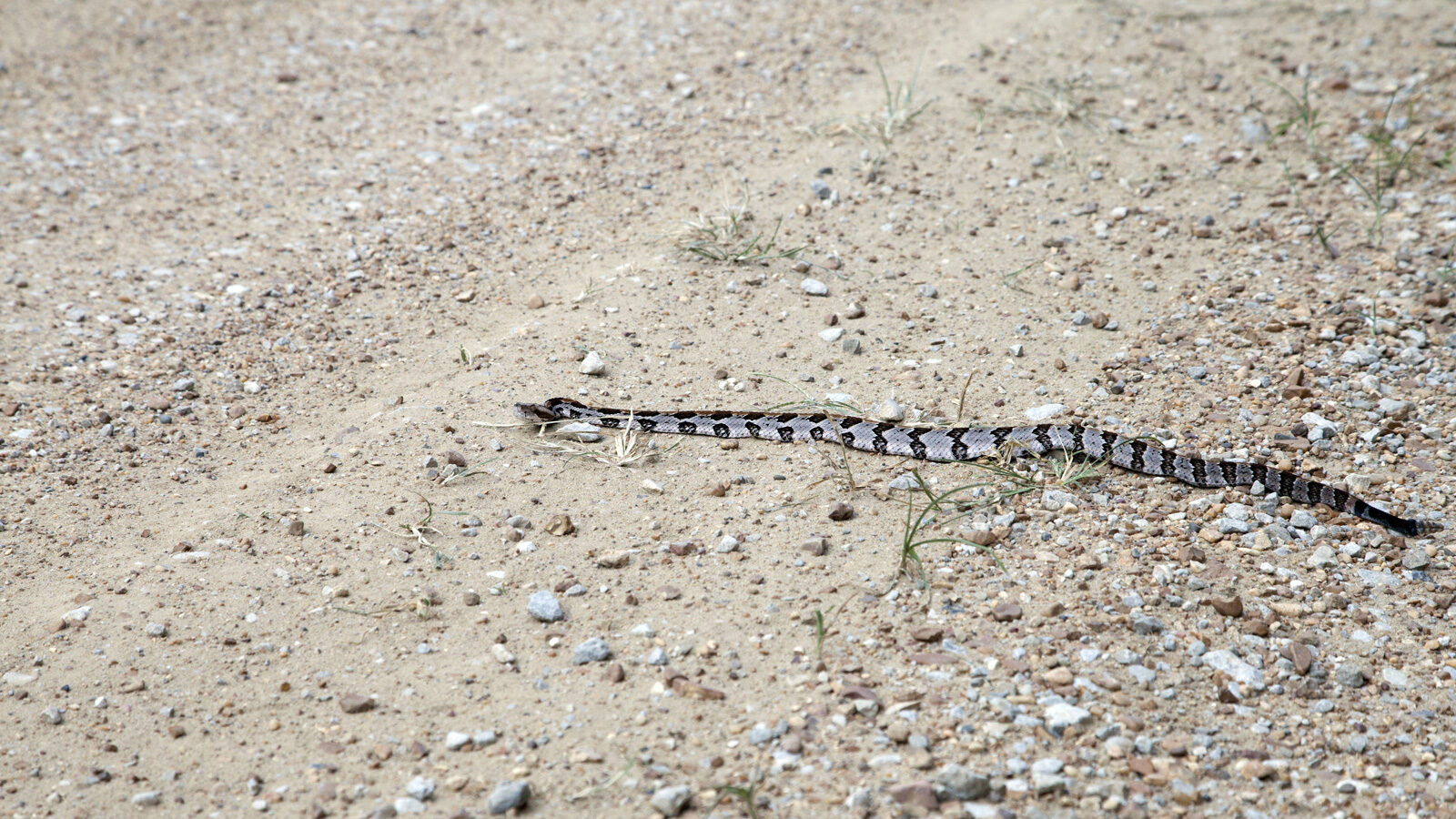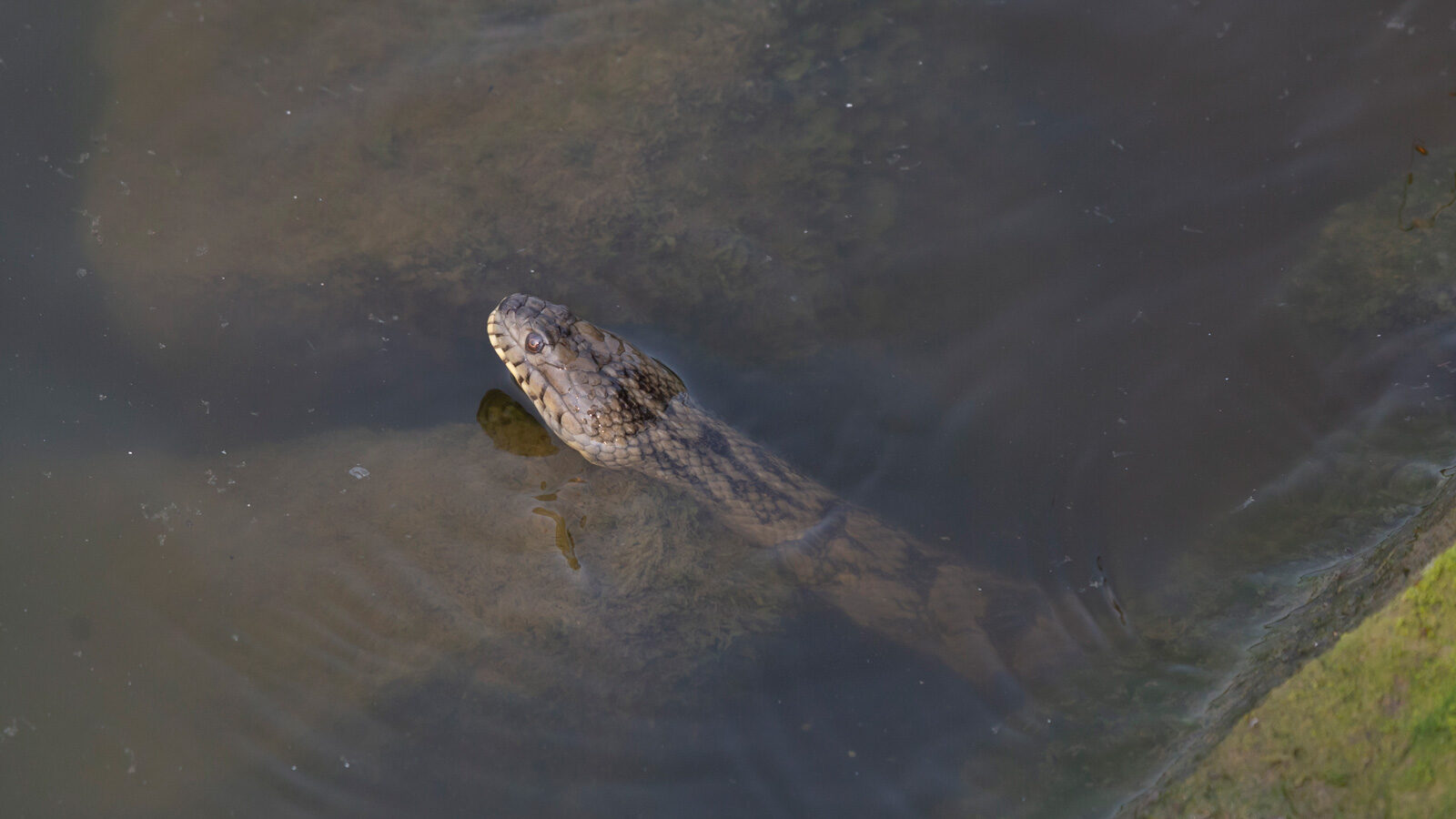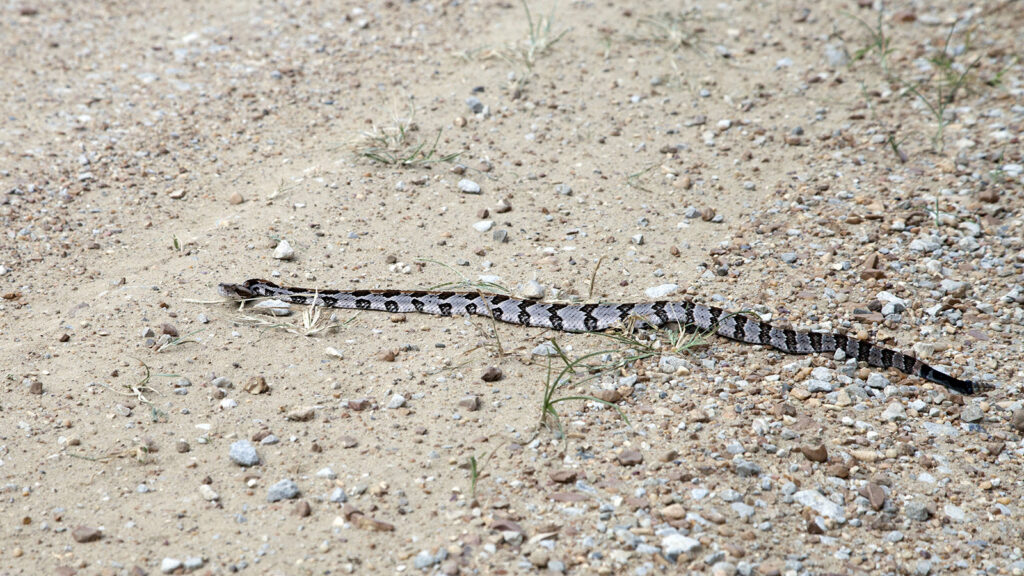Timber Rattlesnakes
at
a Glance

Key Features:
Timber rattlesnakes are large, tan snakes with black chevrons along their bodies, dark stripes near eyes, elongated pupils, wide heads, narrow necks, rattles on their tails, and a rusty brown stripe down their backs.
Least Concern - Population Decreasing
Habitat:
Swamps, river floodplains, forests, and rural farming areas
nesting habits:
Timber rattlesnakes mate in early spring and give birth to five to twenty baby rattlesnakes from August to September.
seasons timber rattlesnakes are active in our area:
All year
Diet:
Small mammals, birds, other snakes, lizards, and frogs
hunting Behavior:
Timber rattlesnakes hunt by ambushing their prey and injecting venom.
Commonly Confused With:
Diamondback Water Snakes

Timber rattlesnakes are often confused with diamondback water snakes because both have patterns on their backs.

Timber rattlesnakes have elongated pupils and rattles on their tails. Timber rattlesnakes have chevron patterns on their backs.
